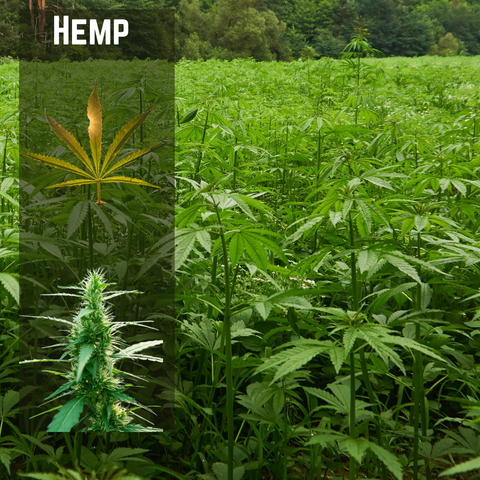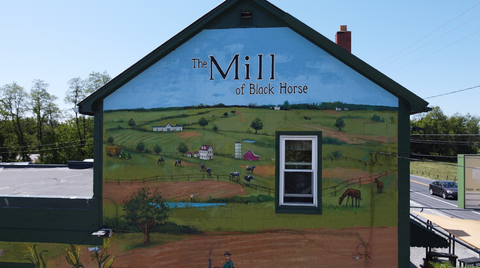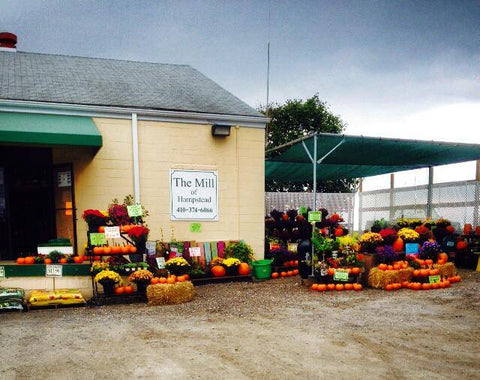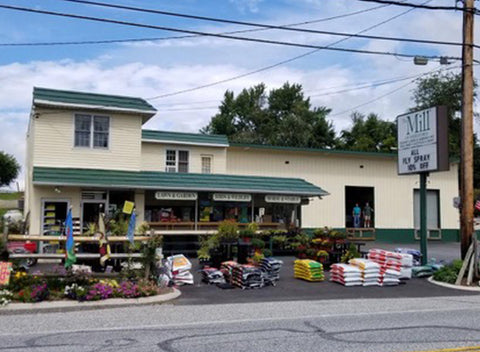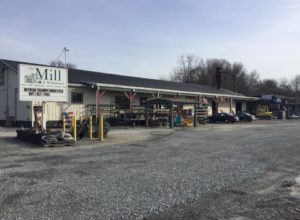Hemp is a versatile and resilient crop, valued for its fiber, seeds, and cannabinoids. While it’s known for its adaptability, growing hemp successfully requires careful attention to its specific needs. Whether you’re cultivating hemp for industrial use or CBD production, these guidelines will help you achieve a healthy, high-yield crop.
History of Hemp Production
Hemp is an ancient plant that has been grown for industrial and medicinal purposes throughout history in many places in the world. It was grown in the US until shortly after WWII when marijuana and hemp cultivation became illegal. In 2017, federal laws changed which allowed the states to regulate hemp production. Both PA and MD developed Hemp Programs.
Pennsylvania was one of the first states to adopt a hemp growing program. Initially, quite a few farmers applied for hemp permits and began exploring production. In the first few years, there was not much experience with varieties that would comply with regulations and there were many growers who did not have a market for their hemp, therefore, there has been a decline in issued permits after the first couple of years. However, recently there has been more research and permitted processing facilities have created a better market for farmers interested in growing hemp. MD growers were a few years behind PA farmers for program development, however, they benefitted from the research and improved development and testing of varieties for various intended uses. More information on hemp programs can be found here:
1. Understand Legal Requirements
Before planting hemp, ensure you’re compliant with local, state, and federal regulations.
-
Licensing: Obtain necessary permits to grow hemp legally. Both MDA and PDA have Hemp Program permitting requirements to propagate or grow hemp. Refer to each states' Department of Agriculture to understand or apply for permits.
-
Testing: Be prepared for testing to ensure THC levels remain below the legal threshold (0.3%). Hemp growers in MD and PA must participate in testing programs.
-
Record Keeping: Maintain detailed records of your planting, growing, and harvesting processes.
2. Choose the Right Variety
Hemp varieties differ depending on their intended use:

-
Fiber: Choose varieties with tall, strong stalks.
-
Seed: Select varieties that produce high-yield seeds for food or oil.
-
CBD: Opt for cannabinoid-rich strains with low THC content.
3. Optimal Soil Conditions
Hemp thrives in well-drained, fertile soils with a pH of 6.0-7.5.
-
Testing: Conduct soil tests to determine nutrient levels and pH. The Mill has certified agronomists who can help large-scale growers interpret soil analyses and provide advice on fertility needs and timing for optimum production.
-
Preparation: Loosen compacted soil and amend it with organic matter or fertilizers as needed.
-
Drainage: Avoid waterlogged fields, as hemp roots are prone to rot.
Contact Mill agronomists for assistance interpreting soil testing results and a crop management plan to achieve optimum soil health with a proper balance of pH and nutrients.
4. Ideal Climate and Growing Season

Hemp grows best in warm climates with plenty of sunshine.
-
Temperature: Ideal temperatures range from 60°F to 80°F.
-
Frost: Hemp is sensitive to frost; ensure planting occurs after the last frost date in spring.
-
Growing Period: Hemp typically requires 90-120 days from planting to harvest. This days-to-maturity works nicely with planting a fall cover crop after harvest to provide stability and organic matter to the soil for the next growing season.
5. Planting Guidelines
Hemp planting methods vary based on the intended use:
-
For Fiber: Plant seeds densely (35-50 pounds per acre).

-
For Seed or CBD: Space plants further apart (15-30 pounds per acre) to allow room for branching and flower development.
-
Depth: Sow seeds 1/2 to 3/4 inch deep in moist soil.
6. Watering Requirements
Hemp is moderately drought-tolerant but performs best with consistent moisture during early growth stages. If container-grown consider these watering tips:
-
Irrigation: Use drip irrigation or overhead systems to ensure even water distribution.
-
Avoid Overwatering: Overly wet conditions can cause root rot and stunted growth.
7. Nutrient Management
Hemp is a heavy feeder, requiring adequate nutrients for optimal growth. A soil test for field growth is essential to knowing the type and level of nutrients to provide.
-
Nitrogen: Apply nitrogen-rich fertilizers during the vegetative stage. As with any crop, split applications throughout the growing season will provide more efficient utilization of nutrients at times when the plants need them most. Hemp grown for fiber will benefit from multiple applications of a protected nitrogen source.
-
Phosphorus and Potassium: Essential for flower and seed development. Phosphorus benefits flowering and potassium is essential for root development which helps with drought stress and leaf health. Multiple applications with protected phosphorus will benefit production.
-
Organic Options: Compost and manure can be excellent nutrient sources.
- Split applications: Apply fertilizer in small amounts and multiple times to provide more efficient use of fertilizer at the times most needed.

- Drone applications: Modern application equipment can prevent damage from late season passes to apply fertilizer including foliar micronutrients and crop protection products. Ask about The Mill's drone application service for crops.
8. Pest and Weed Control
Hemp is naturally resistant to many pests and diseases, but challenges can arise.
-
Weeds: Use mechanical cultivation or mulching to suppress weeds.
-
Pests: Monitor for common pests like aphids, spider mites, and cutworms. Use integrated pest management (IPM) strategies to address infestations.
-
Diseases: Prevent fungal diseases by ensuring proper spacing and airflow. Extended rain or over-irrigation can cause root rot and promote fungal diseases during the heat of summer.
- Scout: Check fields weekly during the growing season for pest pressure and consult an agronomist for advice if pressure is affecting plant health and growth.

9. Sustainable Production
Hemp is an environmentally friendly crop with the potential for regenerative agriculture.
-
Crop Rotation: Rotate hemp with other crops to improve soil health and reduce pests.
-
Low Input: Hemp requires fewer pesticides and herbicides compared to many crops.
-
Carbon Sequestration: Hemp absorbs significant amounts of CO2, contributing to carbon neutrality.
10. Harvesting Techniques

Timing is critical to maximizing yield and quality.
-
Fiber Harvest: Harvest when stalks begin to flower for optimal fiber quality.
-
Seed Harvest: Monitor seed maturity closely and harvest before they shatter.
-
CBD Harvest: Time the harvest when flowers have the highest cannabinoid concentrations, typically just before full maturity.
- Research equipment needed for harvesting depending on the intended use and if special equipment is required to determine costs per acre.
11. Post-Harvest Handling
Proper post-harvest handling ensures the quality and usability of your hemp.
-
Drying: Dry hemp in well-ventilated spaces to prevent mold and preserve cannabinoids.
-
Storage: Store dried hemp in cool, dry, and dark conditions.
-
Processing: Process fiber, seeds, or flowers according to your market needs.
12. Average Yields for Hemp in the Mid-Atlantic Region
In the Mid-Atlantic region, where high-quality soil and favorable climate conditions prevail, hemp yields can be significant:
 Fiber Hemp: Typically produces 2.5-3.5 tons of dry stalks per acre.
Fiber Hemp: Typically produces 2.5-3.5 tons of dry stalks per acre.
13. Special Considerations for Growing Hemp in Containers
Growing hemp in containers is ideal for small-scale cultivation or regions with challenging soil conditions.
-
Container Size: Use pots with a capacity of at least 5-10 gallons to allow root expansion.
-
Soil Mix: Use a high-quality, well-draining potting mix rich in organic matter.
-
Watering: Containers dry out faster than field soil, so monitor moisture levels frequently and water as needed.

-
Mobility: Place containers in areas with maximum sunlight and move them to avoid extreme weather.
-
Nutrient Management: Fertilize more frequently, as nutrients leach out of containers quickly.


14. Industrial Uses of Hemp
Hemp has a wide range of industrial applications, including:
-
Textiles: Used to create fabric for clothing, upholstery, baler twine and rope.

-
Paper Products: An eco-friendly alternative to wood-based paper.
-
Bioplastics: Used in biodegradable packaging and composite materials.
-
Construction Materials: Hempcrete is a lightweight, insulating building material.
-
Biofuels: Hemp seeds and stalks can be processed into bioethanol, biochar or biodiesel.
- Microgreens are being explored as a healthy source of high nutrition.
- Seed/Feed: Seed is being explored for animal and poultry feed due to high protein and exceptional omega-3 fatty acid profile. It can be used in animal feed if GRAS (Generally Recognized as Safe) labeling is obtained. A Lancaster County poultry farm has self-certified their hemp as GRAS and uses hemp seed in their layer feed to help boost omega-3's in the diet. Other growers can follow seed certification requirements for their seed to be legally sold for planting.

- Wildlife Food Plot: Hemp can be used to attract wildlife due to its nutrient-rich seeds and dense cover.

Hemp as a Wildlife Food Plot
-
Deer & Birds: Hemp seeds are high in protein and fat, making them attractive to deer, doves, turkeys, and other birds.
-
Cover & Bedding: Hemp’s tall, bushy growth provides excellent cover for wildlife, making it useful in conservation areas.
-
Pollinator Attraction: Hemp is wind-pollinated, but its pollen is highly attractive to bees and beneficial insects.
-
Late-Season Food Source: Unlike some crops that decompose quickly, hemp stalks remain upright, offering food and cover well into the winter.

Key Considerations for Wildlife Plots
-
Regulatory Compliance: Check state laws regarding hemp planting, especially if planting for non-commercial purposes.
-
Seed Availability: Certified, low-THC hemp seed must be sourced from reputable suppliers.
-
Germination & Growth: Hemp prefers well-drained soil with moderate fertility but requires sufficient moisture during early growth stages.
-
Harvesting Restrictions: If planting hemp for wildlife, you may not be able to legally harvest the seeds without proper licensing.
Hemp Grown for Energy Production
The energy produced from biomass feedstock derived from hemp dry stalks depends on the conversion method used (e.g., combustion, gasification, or biochemical processing). Here’s a general estimate for hemp biomass energy potential:

-
Energy Content of Hemp Biomass:
- The average energy content of hemp stalk biomass is similar to wood (approximately 17-19 megajoules per kilogram (MJ/kg)).
- This translates to about 7,300-8,200 BTU per pound.
-
Energy Yield per Acre:
- For an average yield of 2.5-3.5 tons per acre:
- The potential energy output is approximately 36,500,000-57,400,000 BTUs per acre (or 10.7-16.8 MWh of electricity, depending on efficiency and method).
- For an average yield of 2.5-3.5 tons per acre:
-
Conversion Methods for Energy Production
-
Combustion: Direct burning of biomass to generate heat or electricity.
-
Common in industrial boilers and power plants.
-
-
Gasification: Converts biomass into syngas (a mixture of hydrogen, carbon monoxide, and methane) for electricity and heat production.
-
Anaerobic Digestion: Decomposes biomass in an oxygen-free environment to produce biogas (primarily methane).
-
Pyrolysis: A thermal process that breaks down biomass into bio-oil, syngas, and biochar.
-
-
Industrial Applications for Biomass Energy:
- Electricity Generation: Biomass is burned in power plants to generate electricity.
- Heating: Hemp stalk biomass can be pelletized for use as fuel in residential or industrial heating systems.
- Biofuels: Processed into bioethanol, biogas, or biochar as renewable energy sources.

Biochar is a stable, carbon-rich material produced through the pyrolysis of organic matter, including hemp biomass. It has gained significant attention for its applications in soil health and carbon sequestration.
The Process of Making Biochar from Hemp

-
Pyrolysis:
-
Hemp biomass is heated in the absence of oxygen at temperatures between 400°C and 700°C.
-
This process breaks down the organic material into biochar, bio-oil, and syngas.
-
-
Separation:
-
The biochar is separated from the bio-oil and syngas for specific uses.
-
Benefits of Biochar
-
Soil Health: Improves soil structure, water retention, and nutrient availability.
-
Carbon Sequestration: Biochar can lock carbon into the soil for centuries, reducing greenhouse gas emissions.
-
Renewable Energy Byproducts: The process produces syngas and bio-oil, which can be used for additional energy generation.
Yield and Applications
-
Yield: From one ton of hemp biomass, approximately 35% can be converted into biochar, depending on pyrolysis conditions.
-
Applications:
-
Agriculture: Soil amendment to improve fertility and crop yields.
-
Environmental: Remediation of contaminated soils and water filtration.
-
Industrial: Used as a carbon-rich additive in construction materials.
-
Economic and Environmental Impact
-
Economic Benefits:
-
Diversifies revenue streams for hemp farmers.
-
Provides high-value byproducts for industrial and agricultural markets.
-
-
Environmental Benefits:
-
Mitigates climate change through carbon sequestration.
-
Promotes sustainable land use by improving soil quality.
-
Hemp biomass holds immense potential as a renewable energy source and for biochar production. By leveraging hemp’s high yields and sustainable characteristics, farmers and industries can contribute to energy security, environmental health, and economic growth. Whether used for bioenergy or biochar, hemp continues to solidify its role as a crop of the future.
Since the federal laws changed allowing for commercial production of hemp in 2017, many strides have been made in research to advance the uses of hemp for industrial and medicinal use for humans and animals. Due to the nutritional content, fast and hardy growth habit and environmental benefits, hemp production will continue to increase as markets, further research and innovation grows. Research the potential markets for hemp by searching databases of permitted processing facilities, County Cooperative Extension offices and state Departments of Agriculture to learn more before starting your hemp growing journey.


